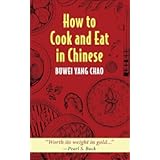Nestled in the heart of Europe, the countries of Central Europe boast not only breathtaking natural beauty but also a rich, ancient tradition of cattle breeding. This heritage forms the bedrock of an industry renowned for its outstanding quality European milk products. As the video above beautifully illustrates, the journey from lush pastures to your plate is one defined by a profound respect for nature, meticulous care, and cutting-edge technology.
For centuries, robust Holstein Friesian and Simmental cows have grazed these verdant lands, yielding milk of exceptional purity and richness. This milk is not merely an ingredient; it is the soul of delicious dairy products, cherished globally for their exquisite taste and remarkable versatility in both cold and cooked dishes. Delving deeper into the processes and products, we uncover the secrets behind this enduring quality.
The Foundation of Excellence: From Farm to State-of-the-Art Dairy
The journey of high-quality milk begins with the unwavering commitment of Czech farmers. Their deep love for nature and dedication to animal welfare are paramount, fostering an environment where cows thrive and produce milk of the highest standard. This traditional care is seamlessly integrated with modern agricultural practices, employing advanced milking, refrigeration, and milk storage technologies to ensure optimal freshness from the outset.
Preserving Purity: Collection and Initial Processing
Once collected, the milk is immediately transferred into insulated stainless steel tankers. This crucial step guarantees that the milk maintains a maximum temperature of 6 degrees Celsius, preventing any degradation during transport. Upon arrival at the dairy, the milk undergoes rigorous testing in state-of-the-art laboratories. Each batch is meticulously checked for the absence of inhibitory substances, and its temperature and acidity are precisely verified. This stringent quality control ensures that only the purest milk proceeds to the next stages of production.
If the samples pass these comprehensive tests, the milk is then directed through a basic valve block into large vertical silo tanks, where it continues to be stored at a carefully controlled temperature of up to 6 degrees Celsius. This careful storage system maintains the milk’s integrity before it is drawn off for further processing, highlighting the continuous vigilance over its quality.
Transformative Processes: Pasteurization and Beyond
The first significant processing step involves guiding the milk into a separator, where the cream is efficiently skimmed off. This separation allows for the creation of various dairy products, each with its own unique fat content. Both the skimmed milk and the separated cream then undergo pasteurization, a critical heat treatment performed in an electronically controlled station. This process eliminates harmful bacteria while preserving the milk’s nutritional value and flavor profile.
Post-pasteurization, the treated milk is subjected to further testing to confirm the effectiveness of the heat treatment. Even the sampling valve itself is sterilized with spirits, demonstrating the extraordinary demands placed on cleanliness throughout the production process. The pasteurized dairy products are subsequently stored in immaculate stainless steel tanks, maintaining a temperature range of 6 to 8 degrees Celsius. Across the entire operation, cleanliness is paramount; strict personal hygiene for all employees and the rigorous separation of production from non-production zones are standard practices, safeguarding the integrity of every product.
Unveiling Central European Dairy Staples: Curd, Dairy Spread, and Yogurt
The exceptional milk from Central Europe forms the basis for a range of beloved dairy products, each with its own rich history and distinct characteristics. Curd, dairy spread, and yogurt are not just ingredients; they are versatile staples that have inspired countless culinary creations across generations.
Curd: An Ancient Delicacy for Modern Kitchens
Curd, a dairy product with roots tracing back to antiquity, holds a special place in Central European cuisine. Its production relies on a state-of-the-art line that upholds stringent hygiene and quality standards. The process begins with the careful souring of milk in specialized fermentation tanks. As the milk ferments, whey separates, leaving behind the distinct, snowy-white curd with its creamy, slightly lumpy consistency and clean, subtly sour taste. This traditional method, enhanced by modern controls, ensures a consistent and high-quality product.
The versatility of curd is truly impressive. It serves as an excellent ingredient for both cold and cooked dishes, adding a unique texture and flavor. The video highlights its use in hearty curd dumplings stuffed with a savory cabbage mixture, where it contributes to a tender, flavorful dough. For lighter fare, it transforms into a delectable filling for tortillas, combined with smoked salmon, dill, and a hint of lime. When used in desserts, an automatic doser precisely controls the addition of fruit or chocolate, ensuring a balanced and delightful experience. Curd, a timeless ingredient, continues to inspire innovative culinary exploration.
Dairy Spread: A Lighter, Flavorful Alternative
The dairy industry’s long history also includes ingenious innovations, such as the patented manufacturing technique for traditional dairy spread, developed in the previous century. This remarkable spread, crafted from fermented cream and milk powder, presents numerous advantages over ordinary butter. Notably, it contains two and a half times less fat, making it a lighter option without compromising on taste. Its fresh taste of fermented cream and exceptionally fine consistency make it a preferred choice for many.
The production of this dairy spread involves several key steps: pasteurization and homogenization of the mixture, followed by souring with a specialized cream culture. The mixture then matures overnight, allowing its distinctive flavor and texture to develop fully. The matured spread is gently heated to 70 degrees Celsius before being filled into pots, where it is labeled with the precise used-by date and checked weight. This meticulous process ensures a consistent, high-quality product every time. Its versatility shines in various dishes, from a quick starter of eggs stuffed with a dairy spread and chive filling to enriching savory tarts, where a teaspoon of the spread ensures a beautifully fused, moist filling that won’t dry out in the oven. It even finds its way into sweet creations, forming a creamy base for an indulgent cheesecake in a cup.
Yogurt: Fermented Goodness for Health and Taste
Yogurt production is a meticulous two-day process that begins with the pasteurization and standardization of high-quality milk. Following this, the milk mixture undergoes homogenization, a crucial step that breaks up fat globules, resulting in yogurt’s characteristically smooth and consistent texture. The homogenized mixture is then fermented for several hours using carefully selected bacterial yogurt cultures, allowing the beneficial probiotics to develop and give yogurt its tangy flavor and health properties.
On the second day, the fermented yogurt mixture is stirred and filled into pots at a precise temperature of approximately 35 degrees Celsius. Packaging occurs on a fully automated line, ensuring efficiency and hygiene. Throughout this entire process, rigorous laboratory tests are conducted to confirm that all finished products comply with stringent safety and quality requirements. The resulting yogurt is not only delicious but also incredibly versatile, forming the basis for many delightful dishes. It can be transformed into an excellent side dish, such as a refreshing mint and yogurt dressing for baked potatoes, or a light and satisfying strawberry dessert, subtly flavored with lemon and vanilla sugar, showcasing its ability to complement both savory and sweet profiles.
Culinary Explorations: Discovering Versatility with European Dairy
The rich tradition of Central European dairy, underpinned by unwavering quality and modern technology, unlocks a world of culinary possibilities. The products showcased – curd, dairy spread, and yogurt – are far more than mere ingredients; they are foundations for both traditional comfort food and inventive contemporary dishes. Their distinct characteristics empower cooks, from novices to seasoned chefs, to create meals that are both wholesome and exceptionally flavorful.
Curd, with its unique texture and mild tang, lends itself beautifully to hearty, traditional recipes like the aforementioned dumplings, offering a satisfying depth of flavor. Simultaneously, its fresh profile is perfect for lighter, modern applications, such as a spread in tortillas, demonstrating its remarkable adaptability. This makes it an invaluable asset in any kitchen striving for both tradition and innovation.
The dairy spread, a testament to ingenuity, presents a lighter, yet equally flavorful, alternative in cooking and baking. Its reduced fat content and fine consistency make it ideal for delicate preparations where a creamy mouthfeel is desired without excessive richness. From binding ingredients in a savory tart to enriching the filling for stuffed eggs or providing a luxurious base for a cheesecake, its versatility ensures dishes remain moist and infused with a fresh, fermented cream taste.
Finally, yogurt, a powerhouse of fermented goodness, offers a healthy and refreshing dimension to meals. Its smooth texture and subtle tang can elevate simple ingredients into sophisticated dishes. Whether enhancing the earthy flavors of baked potatoes with a vibrant mint dressing or creating a light, fruity dessert, yogurt’s capacity to balance and brighten flavors is unparalleled. These examples barely scratch the surface of what can be achieved with such exquisite quality European milk products.











